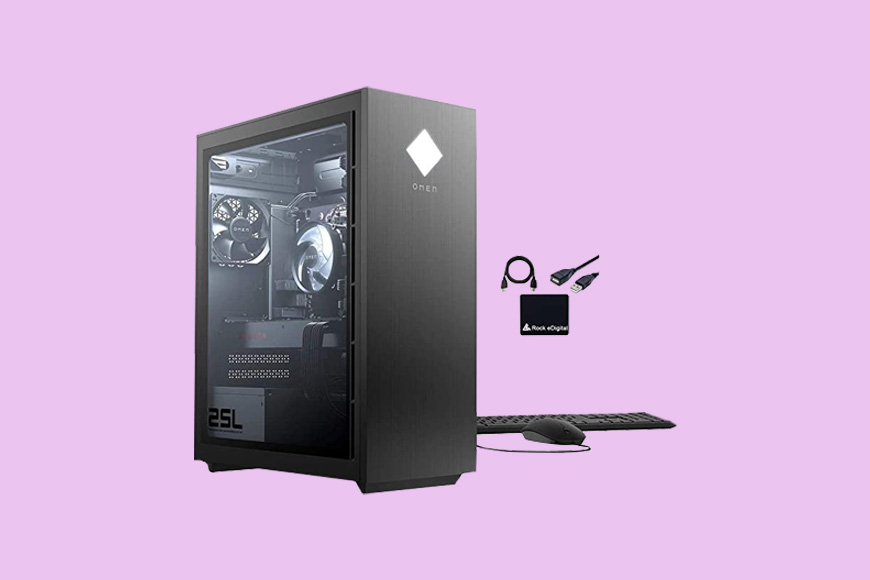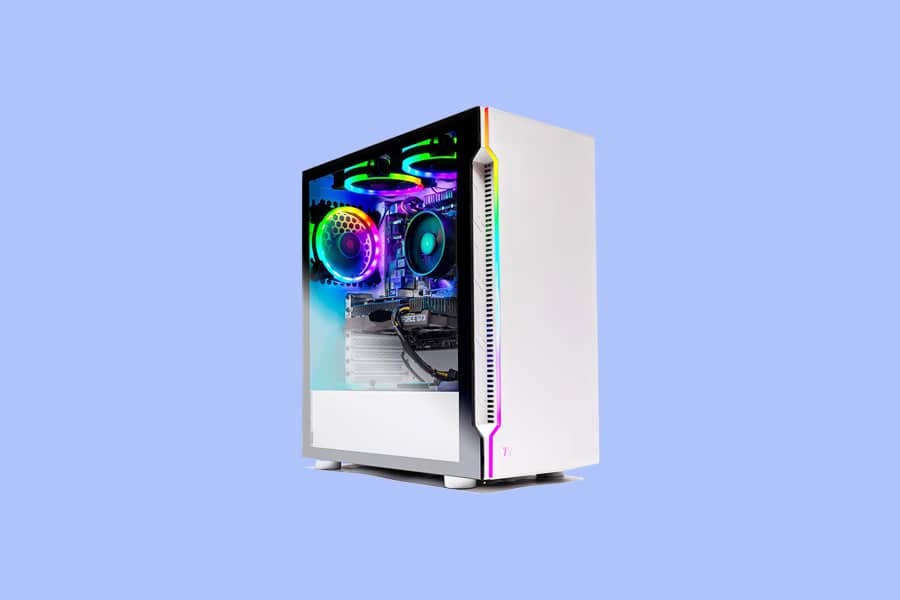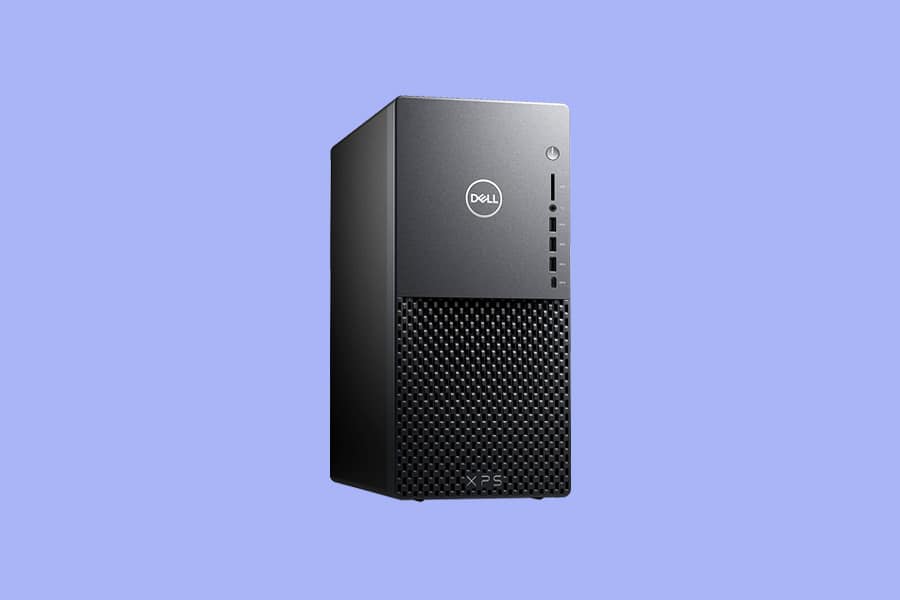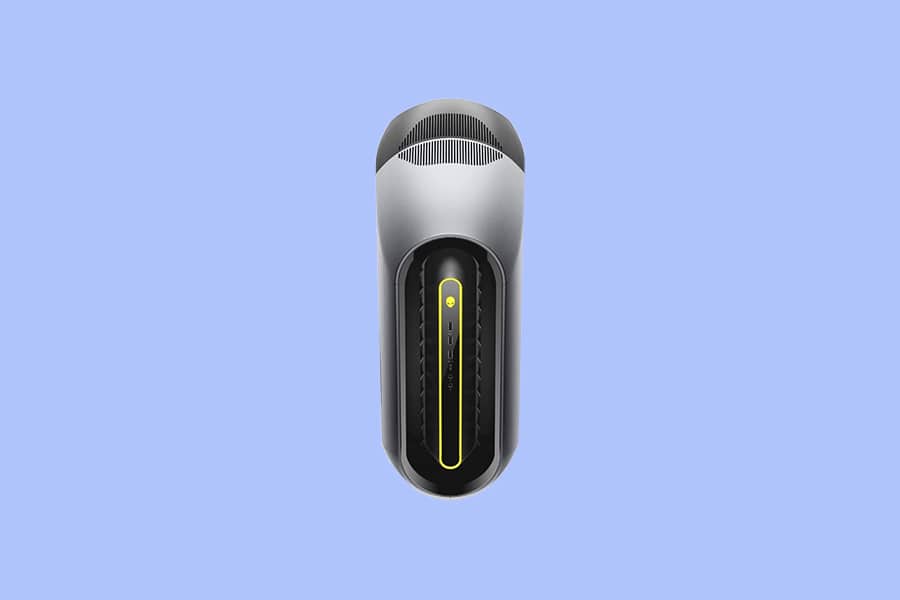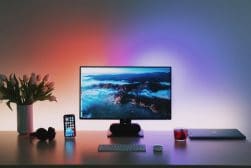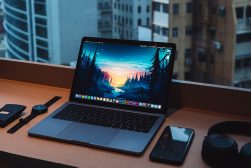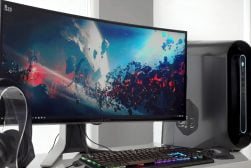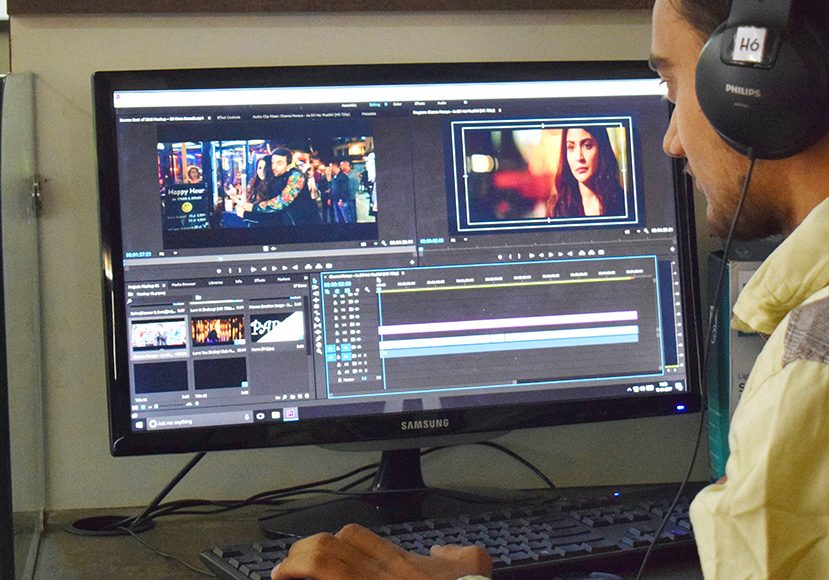
Best PC for Video Editing in 2023
Everything you need to know to get started in video editing on a PC - which PC to choose, what software is best, and what specs you need to build one.
Here’s my guide to help you select the best PC for your video editing needs.
As a part-time video editor, I’ve been using my reliable desktop PC to handle all my editing tasks.
However, as my projects became more complex, involving 4K footage and intricate effects, I realized I needed a more powerful machine.
This led me to explore and test and review the PC computers that I’ll be discussing in this guide.
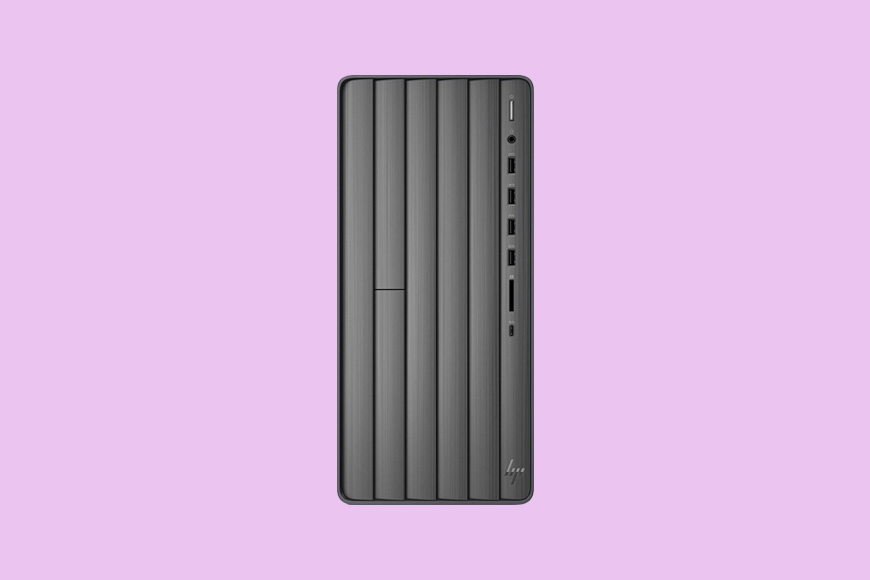
Powerful and reliable with plenty of ports to satisfy newcomers to video editing through to experienced professionals.
A few years ago, video editing required high-end, costly workstations.
But today, thanks to technological advancements, we have access to powerful, affordable, and efficient PC computers suitable for video editing.
Table of Contents
Which PC is Best for Video Editing in 2023?
HP Envy (Our Top Pick)
- Powerful six-core Intel Core i5 CPU
- Lots of Type-A USB ports
- Gigabit Ethernet port
- 16GB RAM
- 512 GB SSD storage
- Limited interior for expansion
- Lacks a Thunderbolt 3 port
HP has manufactured a large selection of home computers designed for a variety of needs, with the HP Envy being one of their most popular everyday PCs.
The HP Envy comes complete with an Intel UHD Graphics 630, which, combined with the six-core CPU and 16GB RAM, is plenty of power for video editors.
Users have the option to upgrade with a more powerful configuration option that includes an eight-core Core i7 CPU and Nvidia GeForce GTX 1660 graphics card for additional power.
It’s capable of handling the best video editing software without any problems, performing stably throughout the editing process when working with online content creation.
Everything is housed in an attractively-ribbed chassis with easily accessible USB ports on the front for ease of use, as well as HDMI and VGA video outputs located on the rear.
While professional editors working with large projects in 4K may want to look elsewhere, the HP Envy is more than adequate for basic video editing of social media content.
If you’re looking for a great video editing computer for general use with the best video editing software, the HP Envy balances power and precision at a price point that won’t break the bank.
HP Omen 30L (Highly Recommended)
- Customisable chassis lighting
- Plenty of configuration options
- Fast and responsive performance
- Simple end-user upgrades
- Unnecessary software
- No front USB-C ports
Primarily aimed towards video gamers, the HP Omen 30L holds its own among the best video editing computers and is capable of handling complex editing projects.
It’s a beautifully-designed computer with a customisable illuminated chassis and an interior design that makes swapping out parts quick and easy.
Featuring an Nvidia GeForce RTX 3080 graphics card and 16GB HyperX Fury DDR4 RAM, it’s as comfortable running Premiere Pro as it is with the latest 4K-ready games.
The internal liquid cooling system, combined with the CPU fans, makes the HP Omen’s run near-silently in most situations, with noise only noticeable when the CPU is fully stressed.
If you’re a pro video editor using editing software such as After Effects, the HP Omen 30L won’t let you down, even with the most processor-intense manipulation of your video footage.
The HP Omen 30L is further proof that video content creators looking for the best video editing computer should seriously consider models dedicated to hardcore gaming.
Skytech Archangel (Best Budget Desktop)
- Pleasing minimalist case
- Great cable management
- Multiple cooling fans
- Nvidia GeForce GTX 1050 Ti graphics card
- Great value for money
- No front USB-C ports
- Lacks power for high-end editing software
The Skytech Archangel is a popular budget-friendly gaming PC that is capable of running video editing tools for smaller content creation projects for social media.
Featuring a Zotac GTX 1650 OC graphics card and 16GB RAM, the Skytech Archangel is more than capable of running free video editing software such as Filmora and PowerDirector as well as premium editors.
If you’re rendering projects and regularly working in 1080p resolution, the Skytech Archangel will handle your workflow with relative ease and speed.
Sporting a neon-lit RGB front panel and matte white chassis, its interior delivers plenty of airflow with multiple cooling fans to keep things moving under stress.
There’s also a great selection of ports, with USB ports and audio jacks for connecting your camera quickly to the system to transfer videos ready for editing.
If you’re a casual videographer looking for an affordable computer for editing video, the Skytech Archangel delivers plenty of performance for your needs.
Dell XPS 8940 (Best All-Rounder Desktop for Editing)
- Strong performance
- Attractive compact chassis design
- Plenty of ports
- Physical media drive
- Limited storage
- Basic keyboard and mouse
Coming in at the mid-budget price range, the Dell XPS 8940 offers great value for money with the necessary high-performance specs for all video editing software.
The compact mid-tower design houses an Nvidia GeForce RTX 3070 graphics card, with space for up to 64GB RAM for the most demanding editing tasks.
It features a raft of ports for connectivity, including USB-A, YSB-C, HDMI, and a jack for headphones and microphones, all easily accessible around the chassis.
The Dell XPS 8940 also comes with a DVD/Blu-ray drive, not often seen on contemporary PCs, which is handy for filmmakers sharing their work via traditional physical media.
If you’re prepared to spend extra, high-end configuration options include an Intel Core i9-11900K, Nvidia GeForce RTX 3070, and a 2TB SSD with a 7200RPM hard drive.
It’s a great all-rounder and a solid workhorse for videographers who need a computer capable of running most video editing software without any fuss.
Alienware Aurora R10 Ryzen (Best for Professional Video Editors)
- Unique and stylish design
- Customisable RGB lighting
- Fast CPU performance
- Lots of ports
- Easy to upgrade the graphics card
- Customisation can get pricey
- Loud cooling fans
Alienware has a well-established and deserved reputation as one of the top manufacturers of high-end PCs dedicated to the latest gaming.
The Alienware Aurora R10 Ryzen is their flagship model for AMD-CPU gaming, with plenty of customisation options to take its performance even further.
As such, it’s a highly capable computer for serious video editing, capable of running Adobe Premiere Pro or applying effects in DaVinci Resolve’s Fusion tools with ease.
It comes with an AMD Radeon RX 6800 XT graphics card, 32GB of RAM, and a 1TB NVMe M.2 SSD, offering plenty of storage space for hefty filmmaking projects.
Everything is housed in a luxurious, sleek chassis design, which includes a slim RGB light around the main controls for an overall professional and high-quality finish.
Exemplifying Alienware’s position at the top of the computer manufacturing hierarchy, the Aurora R10 Ryzen is one of the best video editing PCs on the market.
What Specs Does a Video Editing PC Need?
Choosing the best PC for video editing involves considering several key factors:
1. Processor (CPU):
Video editing is a processor-intensive task. Look for a PC with a powerful CPU – ideally a multi-core processor such as an Intel i7 or i9, or an AMD Ryzen 7 or 9.
2. RAM:
Video editing software can use a lot of memory, especially when working with high-resolution footage. Aim for at least 16GB of RAM, but 32GB would be more ideal for smoother performance.
3. Storage:
Video files can be large, so ample storage is important. A solid-state drive (SSD) is recommended for faster read/write speeds. Consider a PC with at least 512GB SSD, or 1TB if your budget allows.
4. Graphics Card (GPU):
A dedicated graphics card can accelerate rendering and playback. Look for PCs with cards like the NVIDIA GeForce RTX series or AMD Radeon Pro.
5. Monitor:
A high-resolution monitor (Full HD minimum, but 4K is better) with accurate colors is important for video editing. IPS panels generally offer the best color accuracy and wide viewing angles.
6. Ports:
Ensure the PC has the necessary ports for your equipment, such as HDMI for an external monitor, USB-C or Thunderbolt for fast data transfer, and an SD card slot if you’ll be importing footage directly from a camera.
7. Upgradeability:
A PC that allows you to upgrade components like RAM and storage can be a good investment, as you can improve its performance over time as your needs grow.
Do You Need a Powerful PC for Video Editing?
Yes, video editing typically requires a powerful PC. This is because video editing tasks, especially with high-resolution footage, are resource-intensive and demand a strong processor (CPU), ample memory (RAM), a dedicated graphics card (GPU), and plenty of storage.
A powerful PC ensures smooth performance and efficient workflow when editing videos.
However, if you’re only doing basic editing, such as cutting and arranging clips, adding simple transitions, or working with lower-resolution footage, a less powerful PC might suffice.
Similarly, some lightweight editing software is designed to run on less powerful systems.
Is a Gaming PC OK for Video Editing?
Yes, a gaming PC can be suitable for video editing, especially if it meets the necessary hardware requirements.
Gaming PCs are often equipped with powerful CPUs, ample RAM, and dedicated graphics cards, which are essential for smooth video editing performance.
Additionally, gaming PCs typically have high-performance cooling systems to handle demanding tasks.
However, keep in mind that while gaming PCs may have the necessary hardware, they may lack some specific features or software optimizations that are beneficial for video editing.
Is PC or Mac better for video editing?
The choice between a PC or Mac for video editing ultimately depends on your specific needs, preferences, and familiarity with the operating systems.
I’ve been a Mac user since 2012, but prior to that I used a PC for vide editing.
Both platforms have their own advantages and considerations:
Advantages of using a PC for Video Editing:
- Greater Hardware Options: PC platforms offer a wider range of hardware options, allowing you to customize and upgrade components like the CPU, GPU, RAM, and storage according to your specific requirements and budget.
- Compatibility: PC systems have broader compatibility with various software applications, plugins, and hardware peripherals commonly used in video editing.
- Cost-Effective: PCs tend to offer more affordable options, allowing you to build a powerful video editing setup at a relatively lower cost compared to Mac systems.
Advantages of using a Mac for Video Editing:
- Optimized Software Integration: Macs are known for their optimized integration with Apple’s professional video editing software, such as Final Cut Pro, which provides a seamless and efficient editing experience.
- Reliability and Stability: Macs are often praised for their stability and reliability, with a reputation for smooth performance in demanding tasks like video editing.
- User-Friendly Interface: Macs are known for their user-friendly interface and intuitive design, making them accessible to users who are new to video editing or prefer a simpler workflow.
- Color Accuracy: Mac displays are generally known for their color accuracy and consistency, which can be beneficial for accurate color grading in video editing.
Ultimately, both PC and Mac platforms offer capable solutions for video editing. Consider your budget, specific software requirements, desired software integration, and personal preference when making your decision.
It’s also worth noting that professional video editors often use both platforms depending on the project’s needs and client requirements.
How Much Should I Spend on a Video Editing PC?
When it comes to setting a realistic budget for a video editing PC, it’s essential to consider the trade-offs between performance, features, and cost.
Personally, I wouldn’t feel comfortable spending more than $2,000 on a PC to edit my home movies, but if I was earning money by creating videos for small businesses, it would be more logical.
Here are some guidelines to help you navigate the budget considerations when buying a PC to edit videos:
1. Entry-Level Budget (Under $1000):
If you’re on a tight budget, you can still find capable video editing PCs. Look for systems with mid-range CPUs like Intel Core i5 or AMD Ryzen 5, a dedicated GPU (such as NVIDIA GTX 1650 or AMD Radeon RX 560), and at least 16GB of RAM.
Opt for a fast SSD for the operating system and applications, along with a larger HDD for storage.
2. Mid-Range Budget ($1000 – $2000):
With a slightly higher budget, you can aim for more performance and features.
Consider systems with higher-end CPUs like Intel Core i7 or AMD Ryzen 7, a more powerful dedicated GPU (such as NVIDIA RTX 2060 or AMD Radeon RX 5700), and 32GB of RAM for smoother multitasking and complex projects.
Focus on larger SSD storage for faster project loading and rendering times.
3. High-End Budget ($2000 and above):
If you have a generous budget, you can prioritize top-tier components.
Look for PCs with powerful CPUs like Intel Core i9 or AMD Ryzen 9, high-end GPUs (such as NVIDIA RTX 3070 or AMD Radeon RX 6800 XT), and 32GB to 64GB of RAM for handling intensive tasks and large projects.
Invest in fast and spacious SSD storage or consider NVMe drives for enhanced performance.
While budget is important, it’s essential to consider the overall value and balance between components.
Allocate a larger portion of your budget to components like the CPU, GPU, and RAM, as these have the most significant impact on video editing performance.
Balance your spending by opting for a slightly smaller SSD and adding additional storage later if needed.
Additionally, keep in mind that building a PC yourself can be more cost-effective compared to pre-built systems, as it allows for better customization and control over the components chosen.
Lastly, consider the longevity of your investment. Spending a bit more on a high-quality and future-proof PC can save you money in the long run by delaying the need for upgrades or replacements.
What About the Importance of Connectivity?
Connectivity and expansion options are important considerations when choosing a video editing PC.
My Macbook Pro, for example, only has 2 USB-C ports, which severely limits the devices I can plug in concurrently (without using a multiple USB adapter).
Here are some factors to consider with regard to connectivity when choosing a PC.
1. USB Ports:
USB ports are essential for connecting various peripherals and external devices, such as external hard drives, card readers, audio interfaces, and input devices like keyboards and mice.
Ensure the PC has an adequate number of USB ports, including USB 3.0 or higher for faster data transfer speeds.
2. Thunderbolt:
Thunderbolt ports provide high-speed data transfer, making them valuable for connecting external storage devices, monitors, and other peripherals that require fast data throughput.
Thunderbolt 3 ports, in particular, offer versatile connectivity options and can support multiple high-resolution displays and daisy-chaining devices.
3. HDMI:
HDMI ports are crucial for connecting external displays, such as monitors or televisions, for accurate video previewing and editing. Ensure the PC has an HDMI port that supports the desired resolution and refresh rate of your display.
4. Expansion Slots:
Expansion slots allow for future upgrades and customization. Look for PCs with available slots, such as PCIe slots, which can accommodate additional components like graphics cards, sound cards, or specialized capture cards for video input.
These slots provide flexibility for expanding the PC’s capabilities as your needs evolve.
5. RAM and Storage Expansion:
Consider the ability to upgrade RAM and storage in the future. Look for PCs with accessible RAM slots, allowing you to add more memory modules for improved multitasking and handling larger projects.
Additionally, check if there are available drive bays or M.2 slots for adding more storage, whether it’s additional SSDs or HDDs, to accommodate growing project files.
6. Ethernet and Wi-Fi Connectivity:
A reliable internet connection is crucial for downloading software updates, accessing online resources, and collaborating with others.
Check for Ethernet ports for a stable wired connection and ensure the PC has built-in Wi-Fi capability for wireless connectivity, preferably supporting the latest Wi-Fi standards for faster speeds.
7. Audio Connectivity:
For video editing, audio connectivity is important. Look for PCs with audio input and output ports, allowing you to connect microphones, speakers, headphones, or audio interfaces for accurate monitoring, recording, and editing of audio content.
Having a variety of connectivity options and expansion slots ensures compatibility with current and future devices, provides flexibility for system upgrades, and enhances the overall versatility of your video editing setup.

Powerful and reliable with plenty of ports to satisfy newcomers to video editing through to experienced professionals.





